Much has been written about the importance of the mind body connection and how significant this is to our wellbeing. The idea that the mind and body are somehow separate entities to be linked can now be more fully understood as inseparable and mutually inter-dependant. Neuroscience supports this notion and much of this understanding has helped to inform and shape how we as therapists work with our clients particularly around early developmental issues and the debilitating effects of trauma.
As a Body Movement Psychotherapist, I spend many hours working with clients and supervisees traversing the bridge between thinking, feeling and sensing states. Sometimes the links and connections are easily made, but in many cases, people find the messages from their bodies confusing and hard to understand. Our bodies can be experienced as separate, disconnected, or even scary, uncharted territory. This is particularly the case when one’s body is experienced as a place of distress and pain. Mostly people feel bereft and disempowered at this disconnection and are in some way trying to repair or reunite parts of themselves that have been misplaced, long forgotten or somehow excommunicated along the way.
It can be hard at the best of times to listen to our bodies in the way we live today, often driving ourselves in impossible ways to do more, achieve more, go further, go faster, look better. Our underlying natural, sustainable pace and drives may be quite hidden from us and out of sync with what we imagine we need to thrive. As humans, we are natural beings after all, and it is worth remembering that we are part of the natural world and the inherent cycles within this. Animals are wonderful teachers in that they move when they must, play and rest when they can, constantly changing energetic gears whilst also conserving energy.
In the context of therapy, the practice of what I will call ‘Body Mindfulness’ within a safe therapeutic relationship can be a good way to explore and link up the different pieces of this puzzle, often bringing valuable insight and healing. This can be done by carefully introducing the language of the body into the conversation. Some ways of doing this are by noticing and/or following sensations, impulses, imagery, working with symbols, storytelling, playing, using sound, dreams, spontaneous movement and engaging in the creative process. It is not always necessary to fully articulate our experiences to know the importance of them, the embodied experience is often enough. Communicating with babies or young children demonstrates this beautifully. It is not necessarily the meaning of the words that is understood, it is all the other aspects involved in the conversation such as the quality of touch, holding, shaping, sound, gesture, movement, gaze, breath, rhythms, the music of the body in the relationship that conveys so much.
At this time of uncertainty when many of our lives have been disrupted because of the current pandemic, it feels even more important to listen and speak with ourselves and others at a deep embodied level. Many people have experienced enormous stress and had survival responses provoked, with an increase in symptoms associated with anxiety, including restlessness, agitation, difficulty sleeping and an inability to focus to name but a few. We can start to address some the impact of this by attending to what we consider to be both our bodies and our minds. So why not take a moment occasionally to just listen, to hear the sounds around you, feel the edges of where the world meets you and where you are in contact with the earth. Breathe. Try to remember what feeds and nourishes you; be it time lying on the floor, taking a warm bath, smelling the beginning of a new season, listening to your favourite song, stroking the dogs ears, watching the sun come up or running down hills with a friend, sometimes the simplest things can be a gateway to reconnection.



